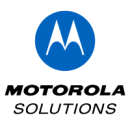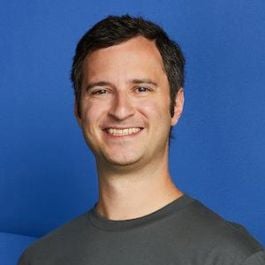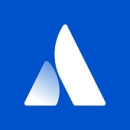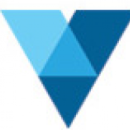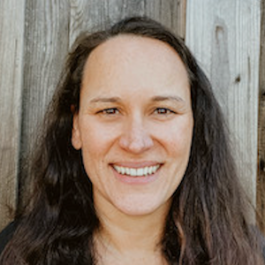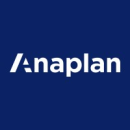Whether it’s a radical new business model, the right use case for emerging technology or the kind of organizational hustle that breeds success, the tech industry loves a good disruption story. So much so, in fact, that the word “disruption” has become a bit of a cliche in recent years, a catch-all term for any form of innovation.
So what does it actually mean to be an industry disruptor?
Harvard Business Review says disruption occurs when a newcomer successfully develops a product or service that can target a segment of an industry otherwise overlooked by incumbent players. Success gives them a foothold, from which they can move into more competitive markets.
But what does that look like in practice? Here, we’ve assembled 23 companies that we believe are exemplary disruptors within their respective industries — from e-commerce logistics to fintech integrations to SaaS platforms — and attempted to define the key ways in which they’ve disrupted their markets.
It’s important to note that tech disruptors come in all shapes and sizes — The Aerospace Corporation has been around since the early space race, for example, while Dawn Foods is a century old. Companies like Apptio, Workiva, ServiceNow, Anaplan, Okta and others on this list all anticipated the boom in cloud computing, big data, software-as-a-service platforms and other trends that defined the last decade in tech. As we spoke to founders, executives and team leaders at tech disruptors across the country about the roots of their early success and the industry trends they’re tracking today, it became clear that how you double down on early wins is just as important as the initial disruption.
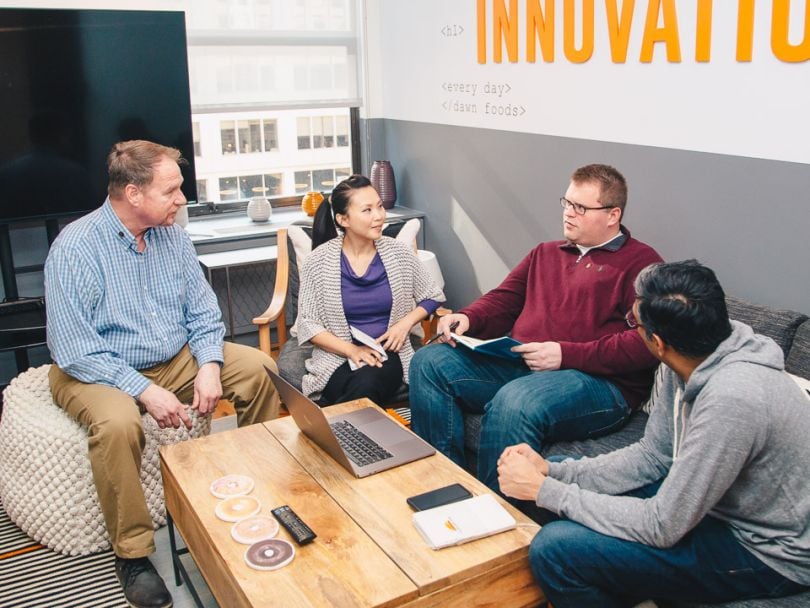
Dawn Digital Innovation Hub

Who: Bob Howland, Chief Digital Officer
Industry: Food tech
Disruptive element: An e-commerce business model
Background: Century-old bakery ingredient manufacturer Dawn Foods isn’t exactly what you might picture when it comes to “tech disruptors.” But the family-owned company became just that when it founded its Boston innovation hub to build a B2B e-commerce product to digitize its business. As Howland put it to Built In, Dawn Foods figured digitization was coming — it was better to take control of the situation, rather than respond if (or when) a competitor acted first.
How do you plan to double down on your early success?
We are in the very early days and have so much work still ahead. On the business side, we need to fully build out the key areas of a B2B e-commerce business to really embrace digital as a new channel and our future. The site is amazing, yet we have a complex business model and plan to fully bring this to life online. Most importantly, we are building out a “voice of customer” program to ensure that we are building an online customer experience that will really drive growth for them and for Dawn alike. This continues to be an exercise in change management and developing dramatically new ways of working. For example, we’ve built an agile software development process and work in two-week sprint cycles to continuously release new functionality and react quickly to market opportunities. We are off to a great start, but I see lots of work ahead to fully realize our ambition.
“In order to future-proof their technology, more and more leaders are moving to a modular approach where they select and assemble solutions from multiple providers.”
What technology trends are currently shaping your industry?
Across e-commerce we are seeing a trend toward composable architecture and composable commerce. In order to future-proof their technology, more and more leaders are moving to a modular approach where they select and assemble solutions from multiple providers. To make this happen, leaders need to adopt an architecture based on microservices, API-first or API-led, cloud-first SaaS and headless — also known as “MACH” — for their solution delivery. We built our first-ever e-commerce solution in 2020 using this composable approach and MACH architecture. In 2021, we’ll continue to test and learn to optimize our modular approach and double down with partners that are delivering strong results. We are a great case study for this movement to reshape how enterprises think about technology. It’s an exciting journey that challenges old ways of working and gives our team lots of flexibility and control over our future.

Industry: Big data
Disruptive element: Bringing remote collaboration tools into all facets of modern work
Background: Launched in 2010, Workiva’s core platform — which helps companies manage, report and orchestrate business data across multiple collaborators, data sets, documents and spreadsheets — helped kickstart the last decade’s mass migration into the cloud. Within five years of launch, more than half of the Fortune 500 was using the company’s Wdesk software. Looking back on the company’s journey thus far, Iskow said a relentless focus on customer experience and success has been a pillar of Workiva’s growth.
How do you maintain the organizational agility required to push further innovation?
Organizational agility is critical to our success. Our approach and the way we’re organized enable us to quickly ideate, incubate and launch new capabilities with high velocity. We have a framework that enables us to rapidly evaluate innovative ideas and bring the best of those to market. It also allows for us to react quickly so we can jump on opportunities and respond to changing market and customer needs quickly.
We strive to keep a culture of innovation in every function and across the organization. We’ve created a cross-functional growth team that, in collaboration with R&D and other functions, discovers and incubates new solutions. Our collaborative tools and the emphasis on connecting cross-functional teams allow us to foster an open, inclusive culture, which is foundational to maintaining our innovation. And we adopt new technologies to help streamline processes and ensure our employees can collaborate across our global offices with ease.
“The pandemic has reinforced the need for companies to operate in a more dynamic, automated and efficient way”
What is the most disruptive technology in your industry right now, and how are you harnessing it?
While we continue to see the benefits of cloud technology, giving companies across business functions and industries the flexibility to work remotely and simplify complex business challenges, we are pushing the limits of Workiva’s platform capabilities for our customers. We continue to enhance our modern platform for our customers and our partners to make it more open, more intuitive and more intelligent by leveraging APIs, automation, workflow and AI.
The pandemic has reinforced the need for companies to operate in a more dynamic, automated and efficient way, and businesses are responding by accelerating digitization and digital transformation. Meanwhile, in the new world of “remote everything” where work-from-anywhere has gone mainstream, collaboration tools and technologies have become a necessity. Both of these trends make Workiva’s platform more relevant than ever.
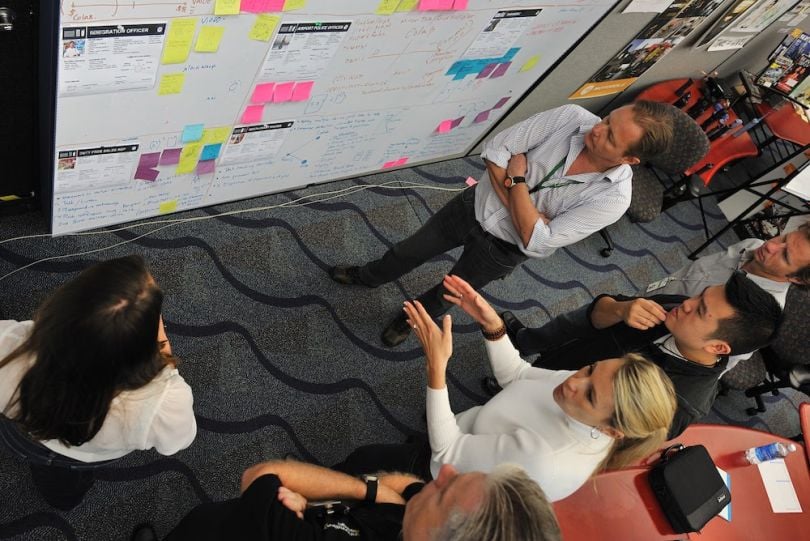
Industry: Communications
Disruptive element: Bringing cloud-enabled efficiency to public safety
Background: Motorola Solutions builds public safety software and hardware products for enterprises, police forces, 911 dispatchers and other first responders. Those products include land mobile radio systems, a command center software platform, AI-enabled security cameras and LTE broadband networks for public safety officials. Saptharishi highlighted his company’s “small, self-contained, agile teams” as key to its ability to keep up with the evolving needs of its customers, and the potential for artificial intelligence to cut down on administrative busy work for traditionally paperwork-heavy roles like police.
What is the most disruptive technology in your industry right now, and how are you harnessing it?
While technology trends in public safety are constantly changing, cloud and mobile technology in particular are changing the way our public safety customers consume information and execute their workflows. One particular area of innovation that has been accelerated by the cloud is the use of artificial intelligence, as it reduces the amount of tools needed by a first responder while also alleviating mental stress by automating administrative tasks so they can do their jobs more efficiently. By incorporating the latest trends like cloud and mobile technology into our customers’ day-to-day workflows, we are helping to close the technology gap in the public safety industry.
“We use a ‘show, don’t tell’ approach where our researchers are in the field shadowing our customers.”
Looking back, what was the key to your organization’s early success?
One key to our success is a relentless focus on continuously understanding the challenges our customers face. We use a “show, don’t tell” approach where our researchers are in the field shadowing our customers — riding along with police officers or sitting with a dispatcher during a 911 call, for example. Additionally, we cultivate and grow our team with individuals who are armed with the skills and knowledge of the right technologies in order to address those specific customer needs.

Industry: Aerospace
Disruptive element: Miniature satellites
Background: Founded to support the U.S. government’s space race projects in the 1960s, The Aerospace Corporation went on to play an instrumental role in the development of rockets and GPS technology. Now, as a non-profit research and development center, Dr. Miller said the organization’s federal funding and mandate to solve complex space-based challenges allows it to explore “high-risk solutions that other companies may not be willing to pursue.” Current services include supporting space launches, developing and deploying satellites and building technology that allows humans to explore new realms of outer space.
How do you maintain the organizational agility required to push further innovation?
Within our technology organization, we use a closed-loop process to scan the latest developments in research as they apply to our customers’ problems and generate solutions using multiple approaches, including foresighting, crowdsourcing across our entire staff and directed solutions with our proven innovators. The most promising novel concepts are then prototyped for demonstration of capability. Enabling the entire company to engage in the innovation process is a proven formula for success at Aerospace. As a non-profit, federally funded research and development center created for the benefit of the national security space enterprise, Aerospace is able to explore high-risk solutions that other companies may not be willing to pursue.
“We’ve been at the forefront of CubeSat development and the miniaturization of satellite components with our AeroCube program for more than 20 years.”
What is the most disruptive technology in your industry right now, and how are you harnessing it?
There are so many exciting and disruptive trends in space right now. We’ve been at the forefront of CubeSat development and the miniaturization of satellite components with our AeroCube program for more than 20 years. Satellite miniaturization has brought an entirely new value curve to the space enterprise — because of these technologies, new commercial services are being integrated into government missions. We are the first to demonstrate laser communications from these miniature satellites, and this game-changing technology enables high data-rate communications directly from space to users on the ground without the hurdles of traditional radio frequency licensing and interference. Finally, artificial intelligence and autonomous systems are the future of space operations. We’re leaning forward on the technology development necessary to have an appropriate level of trust integrated into these next-generation systems.

Industry: Healthtech
Disruptive element: A new, software-driven business model
Background: While most primary care providers follow a “fee-for-service” business model, Oak Street Health believes this approach prioritizes volume over quality care. Founded in 2012, the company takes on the full costs and risks associated with a patient’s healthcare, meaning its business model incentivizes a managed care approach for older patients that seeks to keep them out of hospital emergency rooms. The company’s tech teams mainly work on Canopy, an in-house data platform that helps inform and guide patients’ care, and which Ortolf believes is core to the high quality experience they provide to the company’s care teams and patients.
How do you plan to double down on your early success?
We currently operate more than 80 clinics across the country, with plans to open at least 38 more in 2021. This growth is fueled by our proven care model, our ability to hire and train the best people and Canopy, which have all been instrumental in our success. Canopy combines the power of widespread data integration, data science-driven insights and a consumer-grade user experience to put the right information in front of our care teams at the right time. Built on one of the most cutting-edge technology stacks in healthcare, Canopy allows us to codify the best practices we have learned over years of operating our care model to ensure they are replicated in every center that we open. Canopy is designed by and for our care teams to provide an intuitive, seamless and integrated experience that allows them to focus on caring for our patients.
“There is a misnomer that older adults do not use technology, which is unequivocally false, particularly as younger generations age-in to the Medicare-eligible population.”
What technology trends are currently shaping your industry, and how?
Outside of healthcare, leveraging digital channels to improve the efficiency, convenience and overall experience for consumers has been commonplace for a decade, and we are excited to help lead the charge as it becomes increasingly important in our industry. There is a misnomer that older adults do not use technology, which is unequivocally false, particularly as younger generations age-in to the Medicare-eligible population. We see a huge opportunity to supplement our high-quality in-clinic experience with digital solutions that ensure our patients have access to the resources they need outside the center. From televisits to simply texting with your doctor, digital channels will enable Oak Street Health to truly meet our patients where they are.
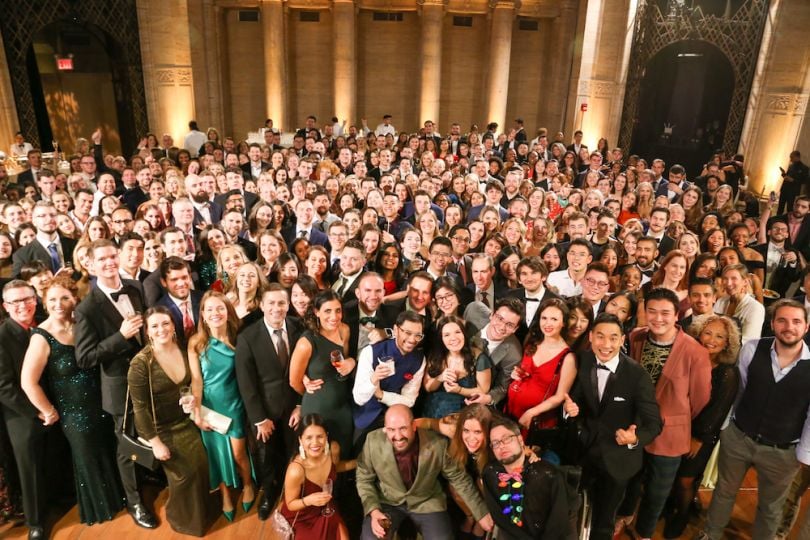
Industry: Healthtech
Disruptive element: Renewing a user’s agency in their own wellness
Background: Noom is disrupting both the fitness and healthcare industries with its “behavior change” technology, pairing principles of psychology with artificial intelligence. The idea is to help users break unhealthy habits, using surveys to develop algorithmically created, individualized health plans and matching them with coaches for personalized support. Despite its achievements thus far — astronomical revenue growth, more than $100 million in funding — Petakov believes “Noom has only reached ten percent of its abilities.”
What is the most disruptive technology in your industry right now, and how are you harnessing it?
In healthcare right now, the biggest disruption is likely not technological — it’s attitudinal. We are seeing huge shifts that leave the power in the hands of the consumer. People are looking for more agency when it comes to their health, which is a super dramatic departure from the ways industries operated in the past. Historically, lots of people felt overwhelmed by the amount of information related to their healthcare, and so they would simply tune it out. Consumers are now much more focused on the outcome drivers and making sure they have a great user experience that’s very much centered on them. This is very disruptive to the incumbent players, most of which are optimized around the value chain of their existing customers.
“We have such a big mission at Noom — early on, we thought we had to tackle everything at once — but the reality is that this boil-the-ocean approach will set a person up for failure.”
Looking back, what was the key to your organization’s early success?
Focus. With rare situational exceptions, I think a relentless ability to focus on a narrow scope has been the key to driving success. We have such a big mission at Noom — early on, we thought we had to tackle everything at once — but the reality is that this boil-the-ocean approach will set a person up for failure. Instead, we did the difficult thing: to first focus on one specific problem and then execute. Some entrepreneurs may feel like that’s giving up on the bigger dream, but in fact, it’s the opposite. You’re more likely to achieve your big-picture goals if you focus on the smaller areas first and expand from there.
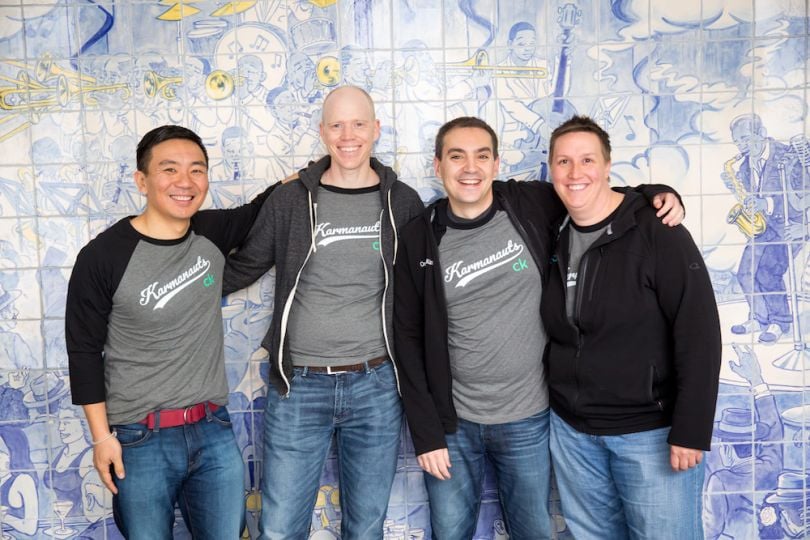
Industry: Fintech
Disruptive element: Transparency and clear guidance on how to improve credit
Background: Credit Karma disrupts the financial industry by giving users access to credit scores, presenting offers that will help improve their financial situation and then taking commissions from banks or lenders if the user acts on those suggestions. Founded in 2007 and acquired by Intuit last year, Graciano said the company has maintained its agility by maintaining its focus on the end user and its discipline when it comes to prioritizing issues to tackle.
What is the most disruptive technology in your industry right now, and how are you harnessing it?
It is hard to imagine anything more impactful to our current and future lives than artificial intelligence. As technologies become more accessible through the cloud, we’re able to leverage AI in ways that previously were not affordable. At Credit Karma, we leverage AI and machine learning to power consumer choice. Everyone’s financial situation is different, and you cannot develop an impactful personal finance product that encompasses all unique financial scenarios unless you have an engine that can power personalization.
The end goal is to automate finances for a big swath of America. I’m hopeful that in 10 years we will have created an efficiency in the market that doesn’t really exist today, by helping consumers save a lot of money over the course of their lives. If we can harness the intelligence that you’d gain from a human financial advisor and make that accessible to everybody, we could then have a much more educated and capable populace when it comes to making financial decisions.
“It’s all about honesty and adaptability.”
Looking back, what was the key to your organization’s early success?
Beyond staying focused and diligent in the early days when resources and funding are limited, you have to be thinking about what comes next — and having honest conversations about what it’s going to take to get there from a leadership and organizational standpoint. It’s all about honesty and adaptability. Early on, I received advice from investors around building an impactful organization capable of achieving future business goals.
As a leader, start by mapping out what you want your company to look like in two to five years and think about who is going to need to be involved to make that happen. This process requires a certain amount of honesty and mutability. For me, that meant hiring for disciplines I was not an expert in. Doing this enabled me to focus on the work where I could provide the most value and impact, while bringing other experts along for the journey. In a similar vein, it’s important to have effective communications with other business stakeholders regarding future plans and what needs to happen along the way. As the CTO, when discussing our company’s technology needs with other nontechnical stakeholders, I approach the conversation by aligning on a common goal that's centered around what we are trying to achieve for our customers and how the technology will get us closer to that goal. That entails having a conversation focused on business impact versus walking through technical details that won’t resonate with a nontechnical audience.
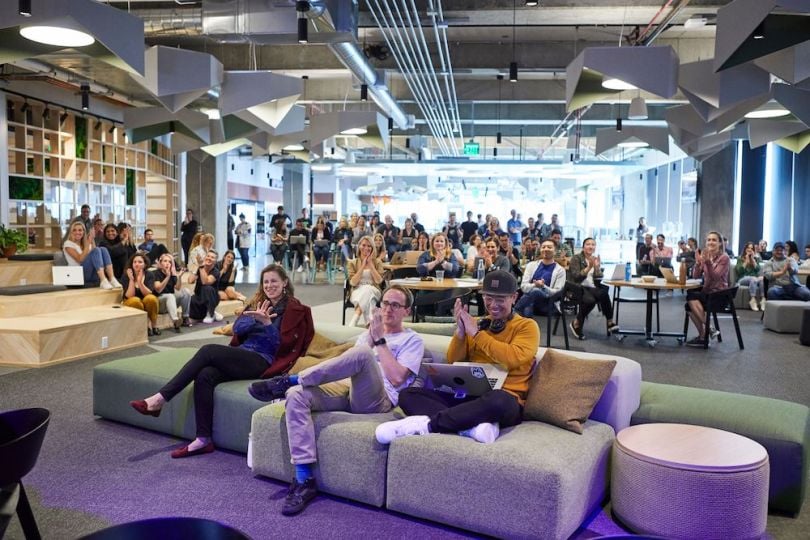
Industry: Software
Disruptive element: Full data integration across organizations that rely on cloud and SaaS systems
Background: With products like Jira, Confluence, Trello, OpsGenie and Bitbucket, Atlassian produces the kind of project management tools that can now be found in tech stacks across many different industries. Tria credits the company’s enduring success with the fact that it is “a product-led company,” rather than letting sales, finance, marketing or any other team dictate its overall direction. That focus on product, he said, creates lower churn, a more active third-party ecosystem and stronger word-of-mouth among users.
How do you maintain the organizational agility required to push further innovation?
Innovation only rarely comes from the top; it comes from everyone in your business. At Atlassian, we developed an intentional system to give our employees the opportunity to work on innovative projects, pulling them out of their “normal” work. In fact, we invest nearly 40 percent of our spending toward R&D projects. This requires a bit of courage from executive leadership, as you have to take bets and not count on hard ROI each time. I would say that the longer you do it, the more empowered your employees will feel and the higher your chance that the investment will pay off.
“We’ve spent the better part of the last two years incorporating AI and ML seamlessly into our products so that this interconnected data can drive end-to-end workflows and insights.”
What is the most disruptive technology in your industry right now, and how are you harnessing it?
Interconnected data and AI/ML are interrelated technologies that have the most potential to change the way we work. We are seeing more organizations relying on cloud and SaaS to collaborate and get work done. As a result, there’s a strong push to have the data of a business integrated together for greater leverage and simpler workflows. We’ve spent the better part of the last two years incorporating AI and ML seamlessly into our products so that this interconnected data can drive end-to-end workflows and insights. We also have integrations with third parties and a richer developer ecosystem associating even more contextual data to improve and customize workflows. The thinking is that with better data, we create better products.
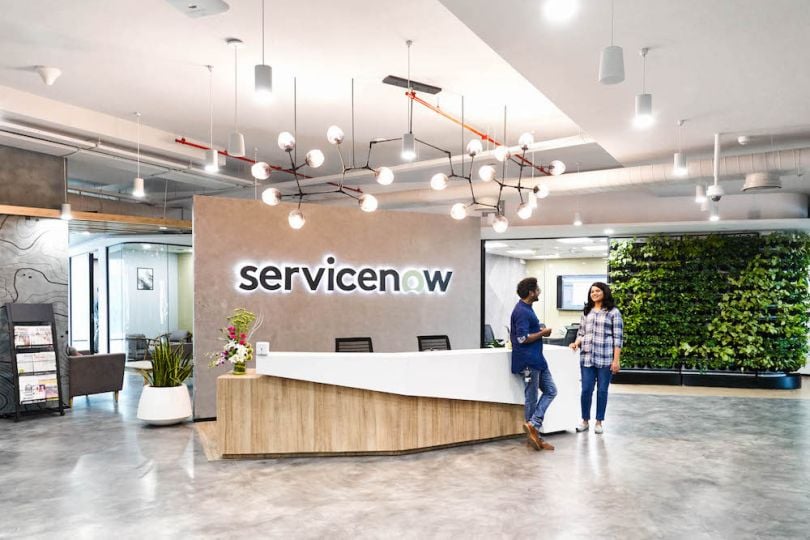
Industry: Cloud-based workflow software
Disruptive element: Automating office busy work
Background: Around 80 percent of the Fortune 500 use ServiceNow’s software to manage workflows, and as the company’s chief information officer, Chris Bedi spends a lot of time working with those companies’ IT leaders to facilitate digital transformation. Having revolutionized the way companies build virtual experiences for customers, employees, IT professionals and designers alike, Bedi said the company is currently working on leveraging new disruptive technologies — namely, AI and low-code development practices — to help customers automate an even wider range of tasks.
How do you maintain the organizational agility required to push further innovation?
The pandemic has pushed digital transformation and innovation to the top of the agenda for the C-suite, making it the number one business imperative today. But striking a balance between innovation and organizational agility can be difficult for organizations, particularly during the current COVID era with distributed workforces. The first step toward agility is to ensure that employees are clear on the strategies and goals of the organization. Another critical requirement is to have a firm understanding of how the existing workforce is deployed. Being agile means making quick decisions and acting on them based on data. Lastly, transitioning to an enterprise-wide DevOps model allows for rapid development and iteration of capabilities, enabling innovation with agility.
“I’d advise leaders to build their networks and spend dedicated time connecting and learning from others, even those working in different industries.”
Looking back, what was the key to your organization’s early success?
I can’t stress enough how important it is to network, both within and outside of your organization. I’ve learned that CIOs and IT leaders are open to sharing experiences and information with each other, which helps tremendously. I’d advise leaders to build their networks and spend dedicated time connecting and learning from others, even those working in different industries. Also, leaders should ensure that their teams have a clear understanding of the desired business outcomes of the organization, as well as their role in achieving these outcomes. It sounds elementary, but it’s easy to lose sight of this. CIOs are ultimately responsible for driving clarity across the enterprise on the IT strategy and targeted outcomes, which makes strong communications skills essential. Lastly, leaders need to constantly mine for top talent and do their part to ensure that their organization is attractive to potential candidates.

Industry: Fintech
Disruptive element: A unified tech infrastructure on the back end of customer-facing systems
Background: Seeing financial institutions straddling multiple vendors and infrastructure systems in the early days of online banking, Q2’s founders saw an opportunity to create a unified platform. The result was a platform able to plug into all of an institution’s legacy systems while creating a unified console and customer experience across mobile, voice and web. Looking back on the company’s founding in 2004, Blue said Q2 had two key assets in the very beginning: deep experience in the community banking market and a strong set of relationships with customers stemming from that experience.
How did you double down on your early success?
The transition from upstart to established partner in our market could have made us less aggressive, which we did not want. Instead, we approached every product and feature like our first products. We spoke humbly about pursuing commercial banking, mobile banking, machine learning, deep analytics and treasury management with existing customers and prospects, but acknowledged that we were often still a “startup” in that part of the space. Our first customer using mobile was as important to us as our first customer using web banking; our first commercial customers received the same focus and attention as our first go-live. Each opportunity for market expansion was new oxygen for the organization to grow.
“Everything is getting smaller, and more and more participants are involved in solutions. These two trends may seem paradoxical, but they actually work in concert.”
What technology trends are currently shaping your industry, and how?
Everything is getting smaller, and more and more participants are involved in solutions. These two trends may seem paradoxical, but they actually work in concert. Improvements in deployment and operations lead to higher velocity. Higher velocity allows for a smaller team to iterate faster and take more risk, thanks to shorter cycles. In turn, improvements in software engineering (like the shift to API culture and service-oriented architectures) broaden the horizon for participation. Our customers now write code on top of our platform to extend it, as do our partners. These successes then influence how we think about the platform itself, creating more space for contributions. Smaller footprints and more participants have led to more value and more velocity.

Industry: E-commerce
Disruptive element: Self-service marketing materials
Background: Vistaprint was founded in 1999, disrupting the marketing industry by providing an online platform where small business owners could upload a logo and print off marketing materials. The company has since expanded to cover all kinds of branded swag, from face masks to puffer jackets. When asked how the organization has been able to maintain its dominance over the market over the ensuing decades, Wensveen pointed to the autonomy Vistaprint allows for its employees, which he says “unlocks the creativity of our teams.” Case in point: the company’s recent decision to completely rebuild its core platform.
What is the most disruptive technology in your industry right now, and how are you harnessing it?
Machine learning unlocks tremendous opportunities for us to better support our customers. Machine learning can help us turn what we know about our customers and their industries into exciting new ways to assist them with design work or even auto-correct errors. This is only the tip of the iceberg of the cool stuff machine learning can do. At our scale, it’s really game changing.
“Amazing things happen when everyone in an organization is aligned and focused on the same goals.”
Looking back, what was the key to your organization’s early success?
Relentless focus. Amazing things happen when everyone in an organization is aligned and focused on the same goals. Giving the whole organization the freedom to do the work and also maintain a relentless focus on a set of goals can be near-magical. I think you can’t go wrong staying focused on the goals and on the customer. It’s also important that the technology be distributed so that different teams are driving different areas of work. Our engineers work on small teams which focus on specific customer-facing “product” areas. We find this arrangement allows them to work together as a team and also remain fast and agile.

Industry: Identity management
Disruptive element: Anticipating the cloud-migration with platform-based login tech
Background: Okta played a large role in turning sign-in technology — once an afterthought — into a fully fledged cloud platform. Aguilar, who is charged with planning product development for Okta’s engineering team, said the company is ready to welcome each new industry to the cloud “as every company becomes a tech company and disrupts its own model.” The company is also innovating on its third-party plug-in network, which currently supports more than 7,000 pre-built integrations
How do you maintain the organizational agility required to push further innovation?
I believe fostering a culture of innovation on Okta’s engineering team depends on three things: how well we can collaborate, the effort we put into giving our team space for innovation and hiring creative problem-solvers. Collaboration has taken on a new meaning during the pandemic, but we’ve made a strong effort to keep people connected with virtual events while also giving them time to disconnect every once in a while.
When it comes to providing opportunities for group innovation, we have two hackathons every year where teams assemble to create new products or services at Okta, and a lot of that innovation ends up making it into the product. Finally, growing an innovative culture starts with hiring engineers with a willingness to change; look at past relevant experience when evaluating a candidate, but also seek out important soft skills like the ability to address challenges creatively and stay agile.
“Okta’s early success can be attributed to loving our customers.”
Looking back, what was the key to your organization’s early success?
I was lucky enough to join Okta at the beginning of our journey as a company and help impact the early culture with Todd and Freddy, our co-founders. Okta’s early success can be attributed to loving our customers, which is a core value that is still at the center of everything we do today. To me, it means going above and beyond standard job responsibilities and working hard to enable every one of our customers across healthcare, government, finance and education to use the best technologies for their business securely. One of my favorite illustrations of our customer-first approach is our work on MLB’s Opening Day launch. We worked with MLB for nine months leading up to Opening Day, created a “war room” for the day to address any challenges and ensured consumers could enjoy an easy-to-use platform while MLB received important insight into fan engagement behaviors.
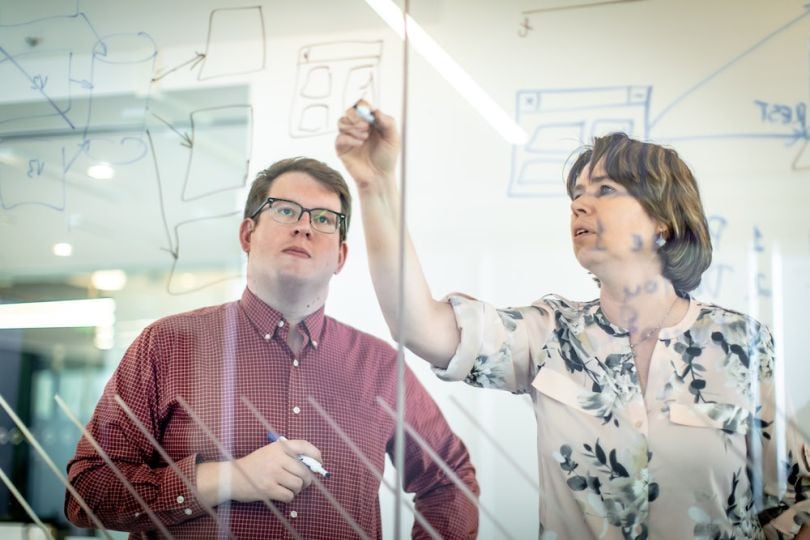
Two Sigma

Who: Camille Fournier, Managing Director and Head of Platform Engineering
Industry: Fintech
Disruptive element: A tech-driven approach to investing
Background: Since it was founded in 2001, New York hedge fund Two Sigma has embraced cutting-edge technology to inform its investment strategy. Nowadays, that means leveraging artificial intelligence and big data technology on more than 71 petabytes of data, sucked in from more than 10,000 sources. The fact that a majority of the company’s 1,600 employees are either software engineers or researchers points to the importance of technological prowess over the skills prized by more traditional investment funds. Fournier, a former CTO of Rent the Runway and VP of technology for Goldman Sachs, outlined a few of the tech trends her team is following right now.
How do you maintain the organizational agility required to push further innovation?
Two Sigma has always heavily invested in our technology platforms. Instead of just organizing small groups of engineers who work directly with modelers or traders on a one-off basis, we actively seek out common needs across our business and build platforms that can serve those needs effectively at scale. These platforms allow us to take innovations from one area and make them available to the whole firm. We are able to do things like adopt advances in machine learning or use the public cloud much more quickly, which stimulates new ideas and keeps us moving forward.
“Access to storage and analytic approaches that operate against large datasets are orders of magnitude larger than they were in the past.”
What is the most disruptive technology in your industry right now, and how are you harnessing it?
It is hard to pinpoint a single piece of technology in finance as the most disruptive. If I had to pick one, I’d say advancements in machine learning from massive data sets, driven largely by access to cloud providers and open source technology. Access to storage and analytic approaches that operate against large datasets are orders of magnitude larger than they were in the past. We’ve successfully harnessed the public cloud to meet the computational and storage demands for these workloads.
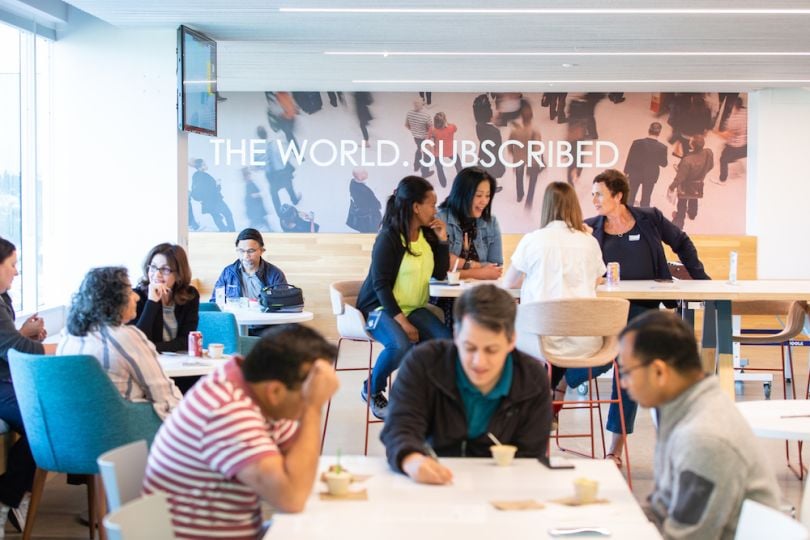
Zuora

Who: Daisy Hernandez, SVP of Strategy and Operations
Industry: Subscription software as a service
Disruptive element: Shifting traditionally product-based business models to subscriptions
Background: With a dashboard to manage orders, quotes, billing and revenue, Zuora helped bring the subscription model into the mainstream. The company has helped more than a thousand customers reinvent their business around subscriptions by pairing institutional knowledge with its technology. Among its success stories, Hernandez pointed to Caterpillar — traditionally a designer and manufacturer of engines and machinery — and its transition to a subscription model based on its IoT data over the last ten years.
What was the first customer foothold for your organization that formed a foundation for your later success?
Caterpillar was an early entrant to the subscription economy and is a great example of how every company in the world — not just traditional technology or software companies — can transform into a subscription business to unlock new growth. More than a decade ago, Caterpillar began outfitting their machinery and equipment with sensors and embedded connectivity to provide customers with software and services that increase the value of their offerings. Caterpillar now has the largest installed base in their industry, with more than 500,000 connected assets — and those connectivity-based services are subscription-based services.
With Zuora’s partnership, Caterpillar transitioned from manual-based subscriptions to a fully automated process producing data and insights that, for one of their customers, meant a 400 percent increase in efficiency, a 100 percent productivity increase and millions in savings. Now other manufacturers follow in Caterpillar’s footprints, including Ford, Fender, Philips and Siemens — all of which now use Zuora. These types of transformations continue to play out across technology, media and retail industries too, as companies come to Zuora for our expertise and stay for our technology to win in the subscription economy.
“We are witnessing the end of ownership and the rise of usership.”
What technology trends are currently shaping your industry, and how?
Manufacturing companies are experiencing a slowdown in growth for their product sales, media companies are struggling to generate revenue outside of ads, software companies are feeling the pressure to meet growth expectations — we are witnessing the end of ownership and the rise of usership. The goal of businesses going forward is to drive more value and freedom for their customers to consume anytime, anywhere, at any level they choose. Companies that are shifting their strategy away from units sold to services used are growing. Zuora’s subscription economy index report shows that subscription businesses have consistently grown 5 to 8 times faster than product-centric businesses, driven by an increase in consumer desire for on-demand access to what they need. In fact, the Harris Poll recently surveyed 13,000 consumers worldwide and found that 78 percent use subscriptions and want to own less stuff.
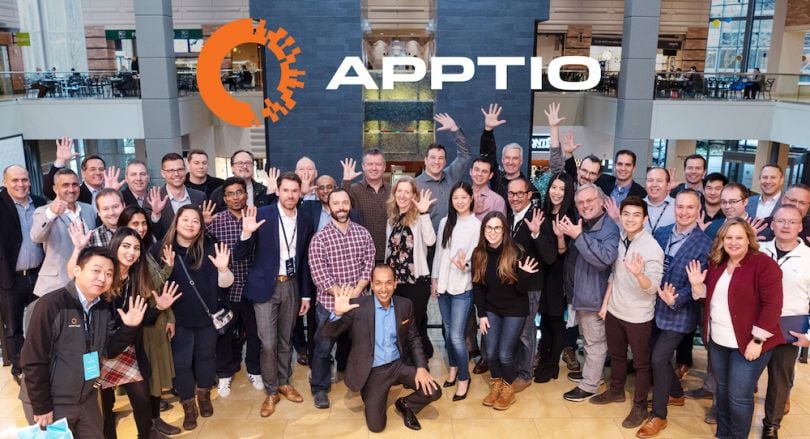
Apptio

Who: Toyan Espeut, Executive Vice President of Global Account Management
Industry: IT management
Disruptive element: Bringing transparency and forecasting abilities to IT spending
Background: Tech leaders use Apptio’s cloud platform to manage, track and optimize their IT investments. As the company’s leader when it comes to customer growth and retention, Espeut credits the way in which Apptio’s customer-first values are embedded into the way it works as an organization, including its hiring practices. Apptio went public in 2016, then went private again via an acquisition by Vista Equity Partners in 2019.
How do you maintain the organizational agility required to push further innovation?
Apptio is a customer-centric organization, and similarly, I take a very customer-first approach when leading my team. As a company, we look to hire for a diversity of skills and experiences, as well as a natural curiosity to grow. In addition to these attributes, we look for candidates who are self-motivated.
In terms of the way I like to lead my teams, I push for creative collaboration and strive to create a safe space to try new things. We also keep a constant open line with customers to understand the challenges that they’re facing — particularly as organizations progress in their digital-first strategies and embark on new journeys like migrating to public clouds.
“COVID-19 really accelerated the need to truly think outside the box and implement a digital-first strategy in order to survive and thrive.”
What is the most disruptive technology in your industry right now, and how are you harnessing it?
While most organizations have been on some level of digital transformative journey in the past few years, COVID-19 really accelerated the need to truly think outside the box and implement a digital-first strategy in order to survive and thrive in the environment that we’re in. With this has come the unbundling and proliferation of IT and enterprise technologies. Our focus has been and continues to be on understanding the challenges our customers are facing and providing them with solutions to meaningfully address those challenges — whether it’s supporting them through their cloud migration journeys, optimizing existing cloud strategies, integrating measures to manage the influx of SaaS applications and even managing the labor that goes into implementing cloud. We have had to become extremely agile in expanding our offering to match the growth of our customers.
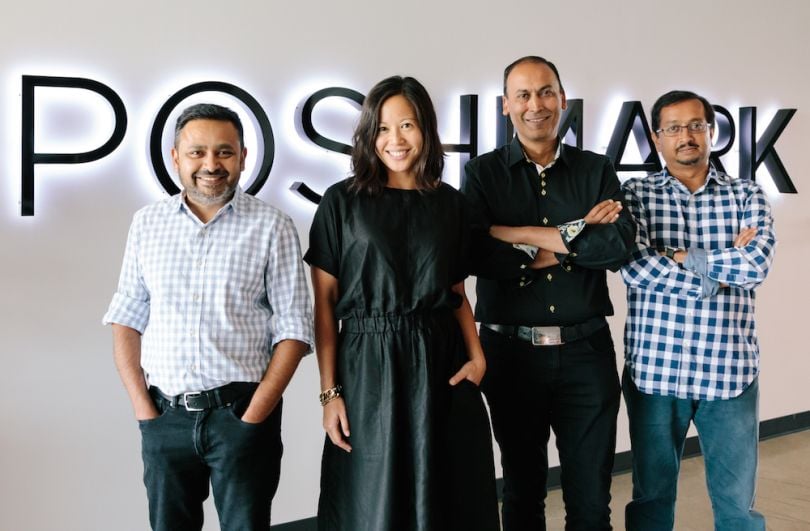
Poshmark

Who: Barkha Saxena, Chief Data Officer
Industry: E-commerce
Disruptive element: Creating an online shopping community
Background: Poshmark inserts the color and community of a physical flea market into the online fashion shopping experience, allowing vendors and users alike to curate “closets” of for-sale items, connect and chat with potential buyers and deliver personalized recommendations. Since it was founded in 2011, the community has grown beyond U.S. borders into Canada and Australia, and beyond women’s fashion into men’s, kids’, home goods, beauty, toys and pets. As Saxena explained, Poshmark has come a long way since its co-founders were manually contacting and onboarding users.
What was the first customer foothold for your organization that formed a foundation for your later success?
Poshmark was founded in 2011 because our co-founders felt that the online shopping experience was largely anonymous and transactional, lacking the joy of discovery and personalization. As a result, we have built a social marketplace that breathes new life into millions of items while creating an opportunity for anyone to both make money and join a community of people with a passion for shopping. In the beginning, the founding team would personally reach out to and onboard community members one at a time. Shortly thereafter, the magic of Poshmark’s innovative social model took off and our community helped expand our base through word of mouth — and continues to do so today. As we continue to grow into new categories and locations, we remain dedicated to our mission of putting people at the heart of commerce and, in doing so, empowering everyone to thrive.
“Each day in 2019 there were, on average, more than 56 million social interactions on our marketplace.”
What technology trends are currently shaping your industry, and how?
Technology and data are the fundamental building blocks for fostering a marketplace rooted in personalization and social connection. Each day in 2019 there were, on average, more than 56 million social interactions on our marketplace — and we’re constantly using that data to power more impactful connections and recommendations. A user’s experience with our home feed and discovery elements is tailored to individual results based on real-time social activity and the users’ preferences. Similarly, “Just Picked” is powered by our proprietary machine learning algorithm that presents personalized item recommendations to buyers based on their past social and commerce interactions on the marketplace.
Over the past year, Poshmark has also focused on driving video commerce, which we believe will seamlessly bring commerce and content together in an even more engaging and palpable way for the industry at large. In April 2020, we launched Posh Stories, a short-form shoppable video feature that disappears from the home feed after 48 hours. Less than a year later, we launched Listing Videos, which empowers Poshmark’s community of sellers to add texture and personality to items in their closet in a more permanent way through video. With our vision rooted in cultivating rich, meaningful experiences for our community, video commerce will remain an area of focus and innovation as we continue to grow.
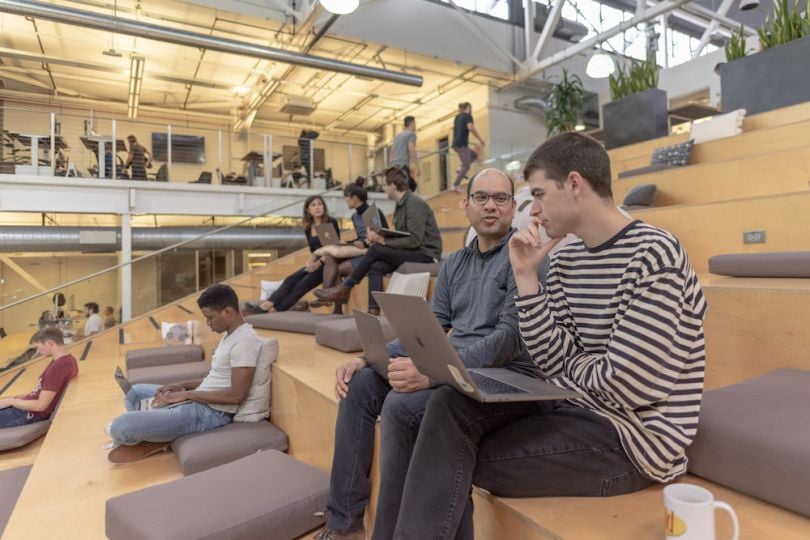
Plaid

Who: Jean-Denis Grèze, Head of Engineering
Industry: Fintech
Disruptive element: Accessing your bank account through someone else’s app
Background: Starting in 2012, Plaid’s APIs have helped millions of users access their bank accounts from within third-party applications. That (now) simple functionality has since expanded to include identity verification, real-time balance information, transaction history and authentication, among others. Asked to elaborate on “the most disruptive technology in fintech right now,” Grèze said user behavior — shaped by the pandemic — has been a much bigger game changer than any newfangled technology in recent years.
What is the most disruptive technology in fintech right now, and how are you harnessing it?
It’s our core belief that digital finance is the future. We have always oriented ourselves to creating that future by building the API that enables the more than 4,000 fintech apps on the platform today. As with all products, having the right technical platform is only one side of the coin — we also need consumers to actually adopt it.
For us, the most significant trend that shaped our industry thus far is the move to digital finance over the last year due to COVID-19. Overnight, as we all experienced lockdown, we could no longer go to a bank branch to manage our money, and so that sea change, in which consumers are rapidly adopting digital financial services, fundamentally changed the industry once and for all. With more than three-quarters of people now saying that they can manage their finances completely online without going to a bank branch, we know that the mainstreaming of fintech is just now taking off.
For us, it’s about building and enhancing this infrastructure and making sure there is reliability and quality across all of our products so that more people can connect their financial accounts to the apps that they are using securely and seamlessly. So the bigger disruptor by far has been consumer behavior, and not technology. When it comes down to technology, we are the disruptor more often than not — but we view our role as helping traditional financial institutions adopt a future where financial services are fully delivered digitally, online and on the go.
“As a small, scrappy startup, we had lots of ideas and ambitious goals (we still do) but decided to pick a few things and focus on doing them really well.”
Looking back, what was the key to your organization’s early success?
A key strategy that started very early on was focus. As a small, scrappy startup, we had lots of ideas and ambitious goals (we still do) but decided to pick a few things and focus on doing them really well. When I joined Plaid around four years ago, there were about 20 people in engineering and we were trying to solve a very hard problem: building a single API to connect apps to the thousands of banks, credit unions and community banks across North America. Having an almost singular focus on solving this problem helped us build the best solution. We were then able to build upon that foundation and unlock even more value-added services. As we’ve grown, our product portfolio has diversified to many other areas, but we continue to stay focused on the things that are most important for our customers and for the growth of the fintech ecosystem overall.
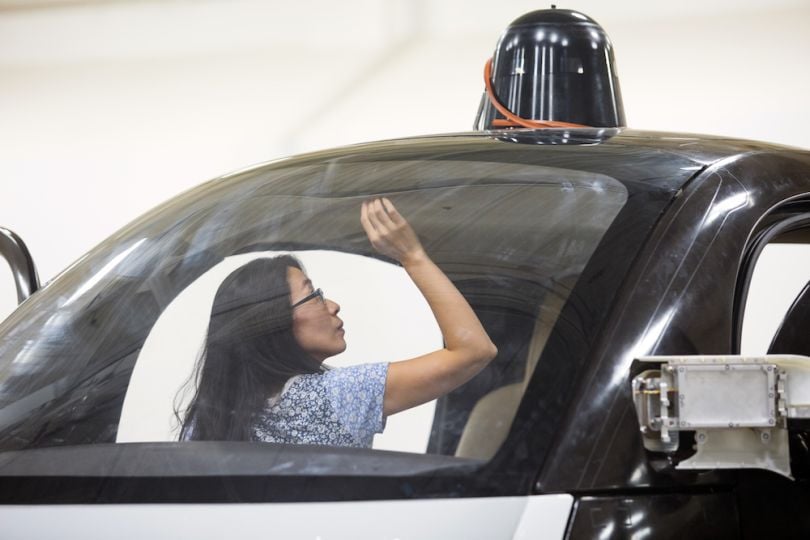
Industry: Autonomous vehicles
Disruptive element: “Driver” technology with built-in road knowledge
Background: Founded inside Google in 2009, Waymo has since evolved into an independent company building autonomous driving technology. Rather than relying on potentially unreliable external data sources such as GPS, Waymo’s autonomous system runs on pre-built maps and sensor data to read the road. As Powell explained, the company characterizes its approach to market expansion as incremental and inclusive, making sure to research a new community’s needs (beyond its tech enthusiasts) and exhaustively mapping an area before deploying its vehicles on the road.
What was the first customer foothold for your organization that formed a foundation for your later success?
At Waymo, we’ve intentionally taken the approach of enabling rather than disrupting, working on fully autonomous technology and making our roads safer since 2009, and focusing on understanding the needs of not only our riders but also the other people with whom we share the road.
One of the significant moments in our trajectory that I think of traces back to April 2017 when we started the early rider program in Phoenix, Arizona. It was the first time that an autonomous driving company engaged with the public within their community to learn about their needs in the context of an autonomous ride hailing service. We drew from a diverse set of participants to understand their particular needs — everyone from young working professionals to retired couples and families with kids — and worked with our Let’s Talk Autonomous Driving Partner, Foundation for Blind Children, to learn more about how we could meet the needs of individuals in our early rider program who were visually impaired. A big part of what we do at Waymo is take a human-centered approach to product development. We’re not designing for the few, but for the masses.
“When there is no human driver to watch or talk to, we have to rely on other ways to make our driving feel predictable and understandable.”
What technology trends are currently shaping your industry, and how?
We think a lot about natural interaction models. When someone sees an autonomous car operated by the Waymo Driver go by, when someone hails a Waymo car or when they’re inside the vehicle, we want them to understand what exactly the vehicle is doing so they know that the Waymo Driver is a fully capable driver. When there is no human driver to watch or talk to, we have to rely on other ways to make our driving feel predictable and understandable. We’re experimenting with visualizations on screens inside the vehicle. And it’s not just inside, but on the outside of the vehicle as well. We’re testing ways of communicating with pedestrians, cyclists and other vehicles on the road. We want our movements to feel expected and readable.
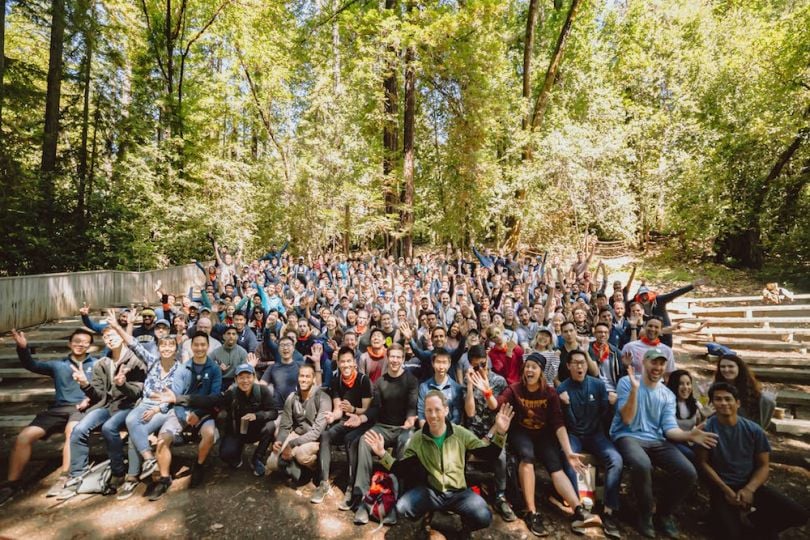
Industry: Internet of Things
Disruptive element: Harnessing IoT data
Background: Samsara pioneered the use of IoT data for connected operations and now collects more than 100 billion data points each year on everything from environmental conditions to factory layouts to trucking routes. Its software then processes the data to produce analytics for more than 20,000 companies across a wide range of industries. As Samsara’s software engineering team leader, Koskelin oversees the company’s internal platform, infrastructure, machine learning and data science capabilities.
How do you maintain the organizational agility required to push further innovation?
One of the most exciting parts about working at Samsara is that we’re solving hard, impactful problems for our customers, while ourselves operating in a really high-growth environment. This means we’re dealing with a lot of complexity, which requires deliberate thinking around how our teams work together. A helpful metaphor might be to think of the systems we’re building (and the teams that own them) as LEGOs. We operate as many small teams with focused goals held together through well defined cultural values and collaborative interfaces. This model, where each team acts like a platform that other teams can build upon, helps us move quickly and nimbly. Just like LEGOs, the value of each team is unique and complementary, and because of how we work together, we’re building amazing things.
“Advancements in edge computing as well as the availability of 5G are enabling evermore real-time, AI-based insight when and where it’s needed most.”
What is the most disruptive technology in your industry right now, and how are you harnessing it?
It all comes down to data, which is why we’re building a company where the power of data is integrated into every part of our platform. Because we have customers in a wide range of industries, from trucking to city services, we ingest data from systems that run the gamut from vehicle telematics to industrial equipment. By investing in our data science and machine learning capabilities, we’re able to combine this data in such a way to provide unique insights to our customers.
Advancements in edge computing as well as the availability of 5G are enabling evermore real-time, AI-based insight when and where it’s needed most — for example in vehicle collision warning systems and other safety applications. The pace of advancement here is super exciting, and we’re still scratching the surface of what we can do with these technologies.

Hubspot

Who: Kerry Hannigan Munz, VP of Engineering
Industry: Marketing tech
Disruptive element: Creating a marketing CRM product
Background: HubSpot’s marketing and sales software offers a swath of customer growth-related services, including social media publishing and monitoring, web content management, analytics, email marketing and SEO. Hannigan Munz highlighted a transparent, iteration-focused culture as a key to long-term success for the business, as well as the product organization’s use of small, autonomous teams that work independently while united around core cultural values.
How do you maintain the organizational agility required to push further innovation?
One key thing that hasn’t changed over the years is how we organize our teams within HubSpot’s product organization. The foundation is what we call the triad: small autonomous teams that combine a product manager, tech lead and UX perspective to build solutions for our customers. We use this core triad structure at the individual team level but also at the group level, and all the way up to the product organization level. This helps us ensure we are making decisions that push the envelope for our customers in a way that builds off the technical building blocks we’ve created to power our systems for reliability and scale. I work with our VP of product and VP of UX, and we deeply respect and appreciate the perspective we each bring to our problem space.
“As a company we ‘eat our own dog food’ and are always pushing the envelope of what’s next for our product to scale to meet our growth.”
What is the most disruptive technology in your industry right now, and how are you harnessing it?
I used to lead our platform infrastructure teams, so I could talk about Kubernetes, cloud computing and CI/CD infrastructure to support making thousands of changes per week. But to me, that is all table stakes to support fast growth. I currently lead our revenue product organization, which means my teams run “HubSpot the company” on top of “HubSpot the product.” HubSpot is a larger company than our typical customer, which makes it challenging and fun at the same time. My teams are very in tune with what we need from a CRM suite to keep up with the sophistication and scale of our own sales, services, marketing, finance, operations and analytics organizations. We do that on top of HubSpot, which means as a company we “eat our own dog food” and are always pushing the envelope of what’s next for our product to scale to meet our growth.

Industry: Business intelligence
Disruptive element: Technology that can “see” an entire business
Background: Anaplan’s signature software plugs into and maps an entire business’s operations to help IT, sales, finance, HR and marketing teams plan and predict the effects of a project. The company is built on the realization that modern enterprises are unified organizations, rather than autonomous units. Pinczuk said her team is using artificial intelligence to boost the accuracy of its forecasting technology and partnering with public cloud leaders to scale those planning capabilities.
How do you maintain the organizational agility required to push further innovation?
Innovation is the lifeblood of the tech industry, and as leaders, I believe we can drive innovation by focusing on time, investment, structure and culture. For me, that means creating dedicated space for innovative thinking, whether that’s through hackathons or small incubation groups focused on more disruptive innovation. I also make sure to allocate resources and investments to innovation and define processes that allow my team to make and pursue innovation bets. Probably the hardest (but most important) piece is culture — how do you balance free thinking with execution? I strive to be intentional about our environment to ensure my team feels empowered to experiment, excited to take risks and motivated to learn and deliver.
“The voice of our customers has always fueled our innovation.”
Looking back, what was the key to your organization’s early success?
Truly embodying what it means to be a customer-first organization is critical. The voice of our customers has always fueled our innovation. We work with our community to understand how business users and model builders across an organization leverage our platform, and bring that understanding into our roadmap so that we are constantly innovating with the customer in mind. We listen to our customers’ needs, think critically about how we can support their future growth and agility, and then rally around delivering the greatest level of value in the quickest amount of time.

Industry: Gaming
Disruptive element: Live streaming
Background: Twitch was famously founded as a spin-off from one of the original live streaming sites, known as Justin.tv, though it quickly eclipsed the popularity of its forebear. More than 100 million monthly viewers now log on to watch their favorite streamers, who use the platform to stream, chat and monetize their content. Browarek Chapp said that while product managers own their roadmaps, the company makes room for all team members to contribute to their development.
How do you maintain the organizational agility required to push further innovation?
As a leader, the best thing I can do is empower my teams with an inspiring “North Star” vision and then give them room to innovate within their areas. Even though product managers ultimately own our roadmaps, I encourage everyone on the team — engineers, data scientists and designers — to contribute to the product strategy and give their feedback. This allows us to include diverse perspectives and build the most innovative and delightful products for our customers.
“Our primary role is to support creators by building features to foster their creativity.”
Looking back, what was the key to your organization’s early success?
Our community and creators are the core of Twitch’s culture and brand. From the very beginning, Twitch has always focused on providing creators with an outlet to create and share their passions with a community of like-minded people. Our primary role is to support creators by building features to foster their creativity. We’ve always made sure that everything we do — from providing our creators with streaming tools to helping them amplify their own platforms — tracks back to putting our community first.
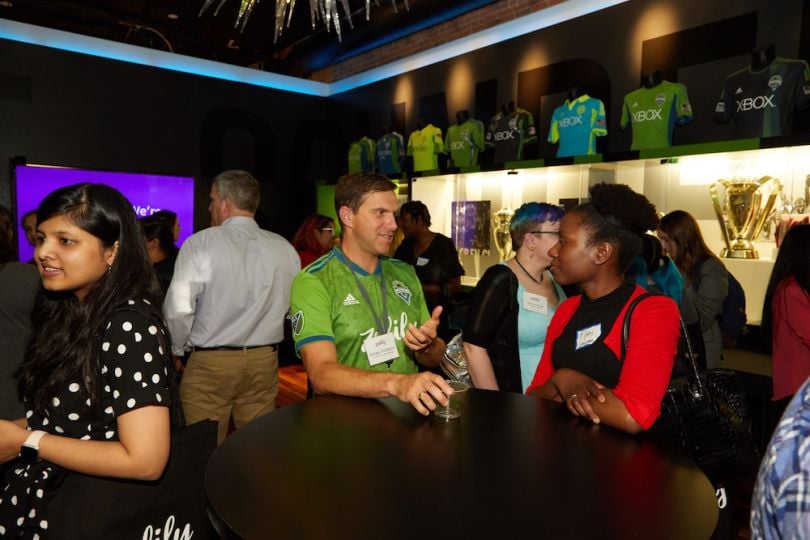
Zulily
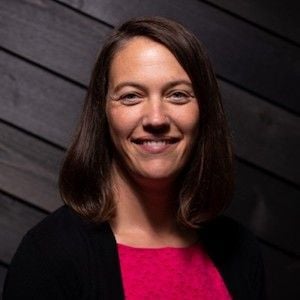
Who: Courtney Kissler, Chief Technology Officer
Industry: E-commerce
Disruptive element: An extremely nimble logistics system
Background: Zulily’s e-commerce model is based on big discounts on clothing, footwear, furniture and other categories that renew every 24 hours, and generally disappear a few days later. The company doesn’t actually buy inventory until its customers purchase it through the site, giving the company an unparalleled level of organizational agility while simultaneously requiring a complex logistics and technology operation on the back end. And as Kissler pointed out, the company’s customer focus can be just as disruptive as its business model.
What was the first customer foothold for your organization that formed a foundation for your later success?
What Zulily does differently is serve a segment of the market that sometimes gets overlooked: moms. And we’ve been focused on that customer since our first sale in 2010 with a unique business model. We are a truly digitally native retailer, bringing together so many pieces of technology — and much of it built in-house. We create our own supply chain technology, our own ML/DS models and even many of the marketing, merchandising and vendor experience tools we deploy. We are constantly running experiments and truly have a culture of learning.
“Our supply chain technology product managers and engineers work closely with our associates in the fulfillment centers to ship products that help make their jobs easier.”
How did you double down on your early success?
From my point of view, it will be the companies with focus that will continue to lead — and Zulily has that. We are building an engaging shopping experience for millions of moms around the world, in partnership with the more than 15,000 brands we work with and enabled by our proprietary supply chain technology solutions, which enables us to deliver customers great value. Our supply chain technology product managers and engineers work closely with our associates in the fulfillment centers to ship products that help make their jobs easier, alongside all of the automated functions within the larger warehouse. Moving forward, we’re always looking for ways to test, learn, iterate and improve — whether it’s the way we apply consolidation logic to improve algorithms or to find ways to make the picking process more efficient. All of that while constantly looking through the eyes of our core customer.




